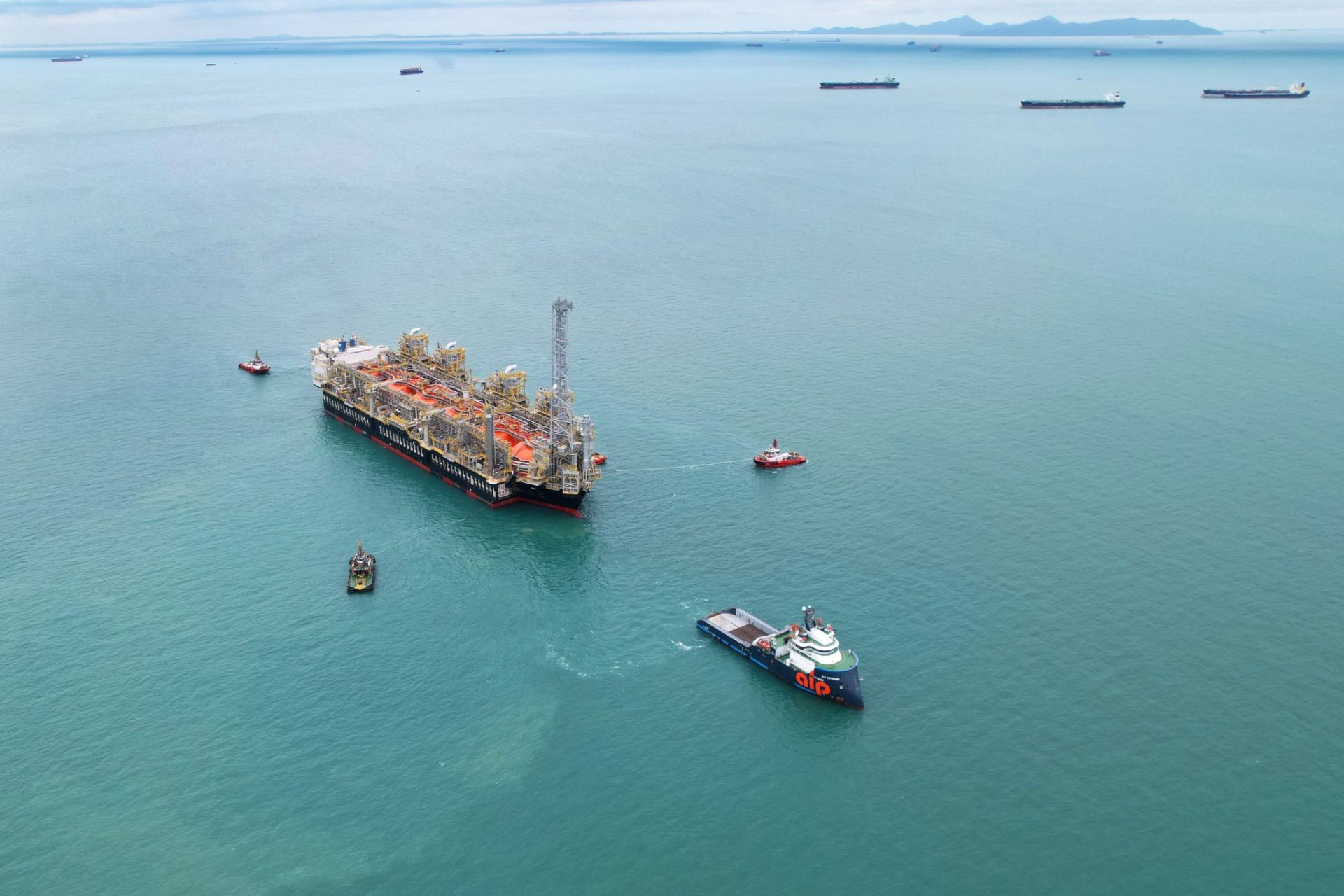Golar LNG’s converted FLNG, Gimi, has arrived at the site of BP’s Greater Tortue Ahmeyim project offshore Mauritania and Senegal. However, the FLNG will proceed to moor offshore Tenerife until the necessary preparatory activities are complete.
According to a statement by Golar, the FLNG, which was converted from a 1975-built Moss LNG carrier with a storage capacity of 125,000 cbm, arrived at the location on January 10.
LNG Prime reported on January 8 that the 293 meters long converted FLNG was expected to arrive in Dakar, Senegal on December 10.
It departed Seatrium’s yard in Singapore on November 19 and is sailing under its own propulsion, supported by the 88.9 meters long escort tug, ALP Defender.
Gimi and ALP Defender were on Thursday morning located offshore Nouakchott, Mauritania, their AIS data shows.
Offshore Tenerife
Golar said in the statement it had notified BP of FLNG Gimi’s arrival.
Following completion of all preparatory activities FLNG Gimi will be maneuvered to its berth at the hub and for her subsequent connection to the feed gas pipeline.
However, Golar and BP have agreed that the FLNG “will proceed to moor offshore Tenerife while awaiting completion of the necessary preparatory activities,” Golar said.
Back in February 2019, Golar entered into the deal with BP for the charter of the FLNG.
This is the world’s second converted floating LNG producer and joins Golar’s Hilli, also converted by Seatrium and currently located offshore Cameroon’s Kribi.
Gimi will produce up to 2.7 million tonnes of LNG per year, using the Black & Veatch “Prico” liquefaction process.
Golar CEO Karl-Fredrik Staubo welcomed the arrival of the FLNG at the GTA field offshore Mauritania and Senegal, her home for the next 20 years.
“We are excited to integrate the Golar FLNG Facility with the GTA hub, and starting the next phase of our long-term relationship with bp and the GTA partners into LNG production,” he said.
Rahman Rahmanov, BP’s vice president projects for Mauritania & Senegal, said this is a “major step forward for overall delivery of the GTA1 project in Mauritania and Senegal.”
FPSO
As per the project’s FPSO unit, it left Cosco Shipping Heavy Industry’s yard in Qidong, China in January last year.
Kosmos previously said the FPSO was expected to arrive on location in the first quarter of 2024.
Earlier this week, the unit was located offshore Dakhla and sailing north.
Its AIS data showed on Thursday it was located offshore Tenerife, the largest of Spain’s Canary Islands.
Following arrival and completion of commissioning activities at the site offshore Mauritania and Senegal, the FPSO will process natural gas – removing condensate, water, and other impurities – before exporting it by pipeline to the project’s FLNG facilities, 10km offshore.
With eight processing and production modules, the FPSO will process around 500 million standard cubic feet of gas per day.
The FLNG will liquefy majority of the gas, enabling export to international markets, while some of the supplies will help meet growing demand in the two host countries, BP previously said.
Subsea work
Golar said in its third-quarter report that commissioning is expected to take about six months from the commissioning start date with commercial operations (COD) expected thereafter.
This means that the commercial launch of the project could be achieved in the third quarter of 2024.
Golar and the GTA partners are “working on initiatives to further optimize the commissioning period in order to achieve COD as early as possible,” it previously said.
BP’s interim CEO Murray Auchincloss told analysts during BP’s third-quarter earnings call that the company is “hopeful” that it will launch the first phase of its Greater Tortue Ahmeyim FLNG project in the first quarter of 2024.
The company pushed back the start of the project due to a delay in the subsea scope.
However, US firm and project partner Kosmos said in its third-quarter report that the delivery of first gas from the first phase of the project has the potential to slip into the second quarter of 2024.
In October, BP selected Swiss-based offshore contractor Allseas to complete the remaining subsea pipelay scope for the FLNG project, replacing previous contractor Houston-based McDermott.
Allseas said in December that it has started GTA offshore pipelay work using what it says is the world’s largest construction vessel, Pioneering Spirit. Allseas’ offshore construction support vessel Oceanic is providing installation support.
Pioneering Spirit will complete the pipelay scope, which covers the approximately 75 km outstanding on the two export gas lines and four CRA infield lines, with multiple structures, Allseas said.

